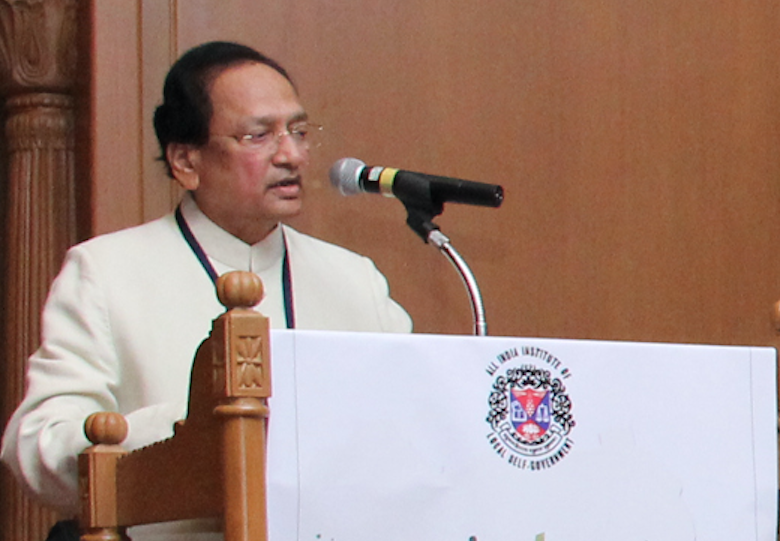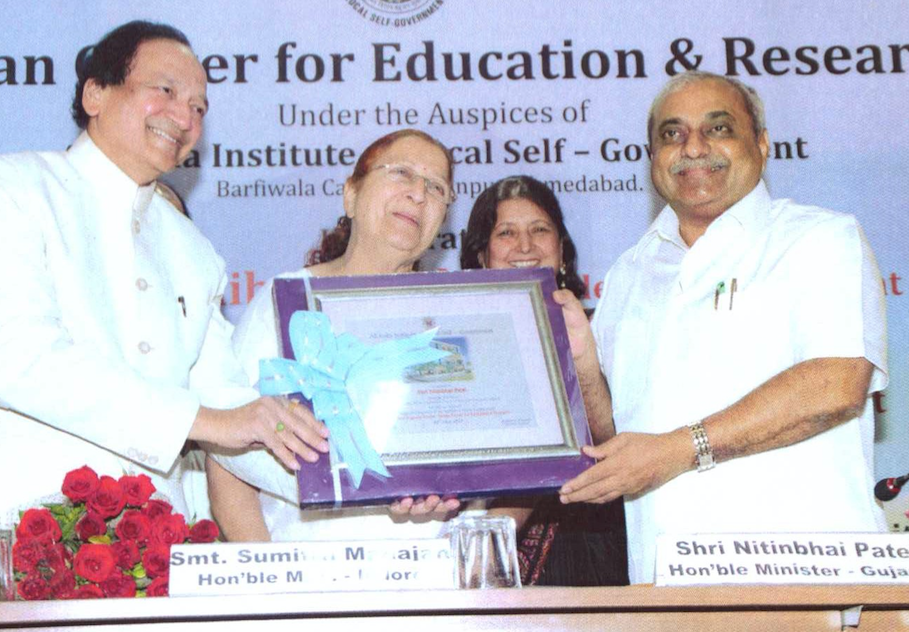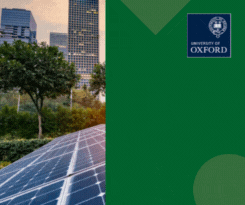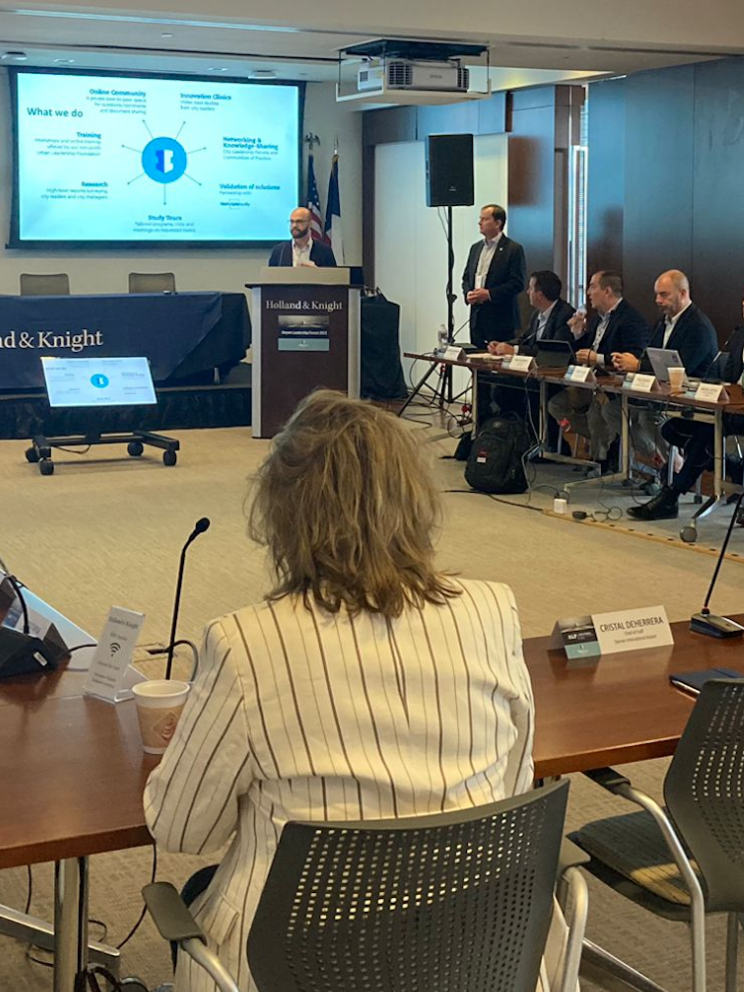
Photo: Screen-Shot-2016-05-02-at-11.59.06
Interview: Ranjit Chavan, President, All India Institute of Local Self-Government (AIILSG)
20 April 2016
by Jonathan Andrews
How does AIILSG work with cities in India and what have been the obstacles to increased municipal collaboration?
AIILSG has been working with urban local bodies in India for the past 89 years. Over the years it has also increased its geographical footprint by establishing 30 regional centres across India. It provides support to urban local bodies by providing capacity building for efficient service delivery and also as part of outreach programmes.
At AIILSG, we are privileged to have a global perspective on the work that urban administrations and national governments are doing to develop sustainable and achievable solutions to urban challenges. We recognise the value of sharing insights and lessons to help cities cultivate a clear approach to urban infrastructure development.
One way in which we advance this goal is by publishing our professionals’ globally applicable experiences, insights and advice as they work to advance the agenda on sustainable cities.With the increasing demand for consultancy in the field of urban development, AIILSG has put its foot forward and has accomplished various assignments/jobs under various National Policies and Missions. The major obstacles encountered are the lack of political and social will as well as primary data validity and acquisition.
Prime Minister Narendra Modi has announced that the government will set up 100 smart cities across the country, through the India Smart City Challenge. Please tell us about AIIILSG’s role.
AIILSG is proud to have been part of the Smart City Mission acting as an empanelled consultant for the preparation of Smart City Proposals. Under the mission, we have successfully submitted four Smart City Proposals for the selected 98 cities.
Within these proposals, we have captured some of the most innovative concepts and practical insights from our publications and presented them here to provide what–in our opinion–is one of the most definitive reviews of literature on the subject of sustainable cities.
What has been the response and commitment from the cities and their leaders to the announcement? Have they shown a real desire to be nominated by their state?
The municipal as well as district administrations have shown remarkable dexterity and have looked at their city from a fresh perspective. They have looked for out-of-the-box solutions to make their city smart and put tremendous effort into achieving this.
Cities and their leaders have to raise an amount of 100 crore (1 billion rupees (US$14.8 million)) per year in addition to the 100 crore being offered by the central government after the successful submission of the Smart City Proposal for their respective city.
Are local municipal leaders in a position to be able to carry out these ambitious plans for smart cities? How much capacity building is still required in cities to realise the smart goals?
All types of initiatives have been proposed to make a city stand out in the competition to be nominated as one of the top 20 cities to be announced in the first year.
Each selected city has its own unique urban fabric, hence their requirements are also unique. Urban governance at present lacks the requisite know-how as well as capacity to undertake such projects and cities would require a lot of handholding and capacity building to achieve the desired objectives.
The development of sustainable cities requires governments and city administrators to focus on creating a supportive policy environment that encourages both financial and environmental sustainability. Indeed, there is a growing recognition that–across the spectrum of infrastructure–different sectors often require very different policy approaches.
Creating supportive policy must also happen at the city level in order to overcome local challenges. For example, in Mumbai, the local government has created policy that incentivises developers working on infrastructure projects to build tenement housing for some of the 60 percent of residents that currently live in slums.
Policy is also critical at the tactical level. Both privatisation and the creation of regulated asset-backed structures require governments to develop robust policy frameworks in order to ensure that both investors and users are properly protected.
This will require a greater focus on policy integration between levels of government as well enhancing the public sector’s ability to understand and operationalise proper urban land use planning to accommodate sustainable development.

Where will the financing come from?
The funding will be through seed capital of 500 crore (5 billion rupees/ US$74 million) from the Government of India and 500 crore from the State and the rest of the funds will come through (PPPs) or the levy of other taxes and user charges.
What has been the response from citizens to the smart city plans? Have they been involved and consulted in the process?
The cities developed their vision and strategies based on extensive citizen consultations spread over three rounds. This made sure that the city plans were well grounded in the local context and provided the base required for any city development project.
Preparation of the Smart City Proposals has been a totally citizen-driven process. Their suggestions and feedback have been taken through various means such as written submissions, social media, through government websites and various focus group discussions as well as ward level consultations so as to achieve a homogenous and representative mix of suggestions from citizens.
How important is it for the cities to learn from each other and from others around the world?
It is very important that the cities in India first learn from each other’s innovative ideas and good practices and then look outside at western countries.
What do you think are the key challenges facing Indian cities and how can AIILSG help in finding solutions?
The key challenge in Indian cities is the lack of skilled human resources, innovative solutions and a sustainable funding mechanism.
AIILSG, as a training and capacity building institute, is providing help to urban local bodies in making their human resources efficient and bringing in various national and international experts to provide innovative solutions with sustainable funding.
You are a Co-President of UCLG ASPAC which will host its Executive Bureau Meeting in Delhi in May. What are your plans and expectations for the meeting?
For government, it is increasingly important to look at achieving their objectives through sustainability. That means creating policy that encourages long-term planning, and refocusing procurement approaches to reward sustainability. It also means securing funding that recognises the ‘whole of life’ cost of infrastructure rather than just the design and build phases.
The Executive Bureau Meeting of UCLG ASPAC will be a platform for all mayors and local government leaders across the Asia-Pacific region to deliver their voices, views, thoughts and interests related to sustainable urban development. This year, among others important discussions, we would like to focus on the Smart Cities Mission of the Government of India and how Asia-Pacific members can benefit from the strategies of the programme.
In addition, it will also be a cherished opportunity to share and discuss Asia- Pacific best practices and experiences. The meeting will also emphasise and elaborate upon the various instruments available for sustainable development.









